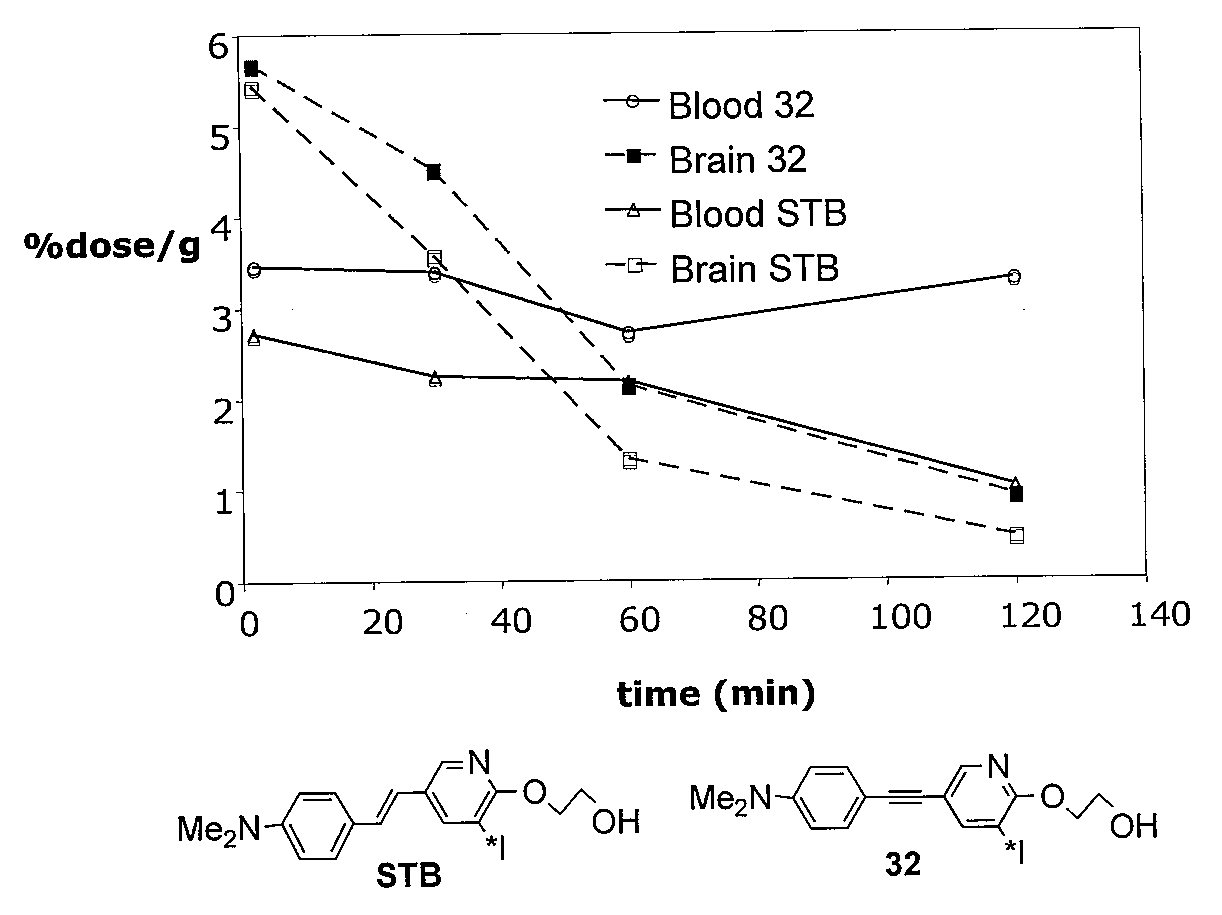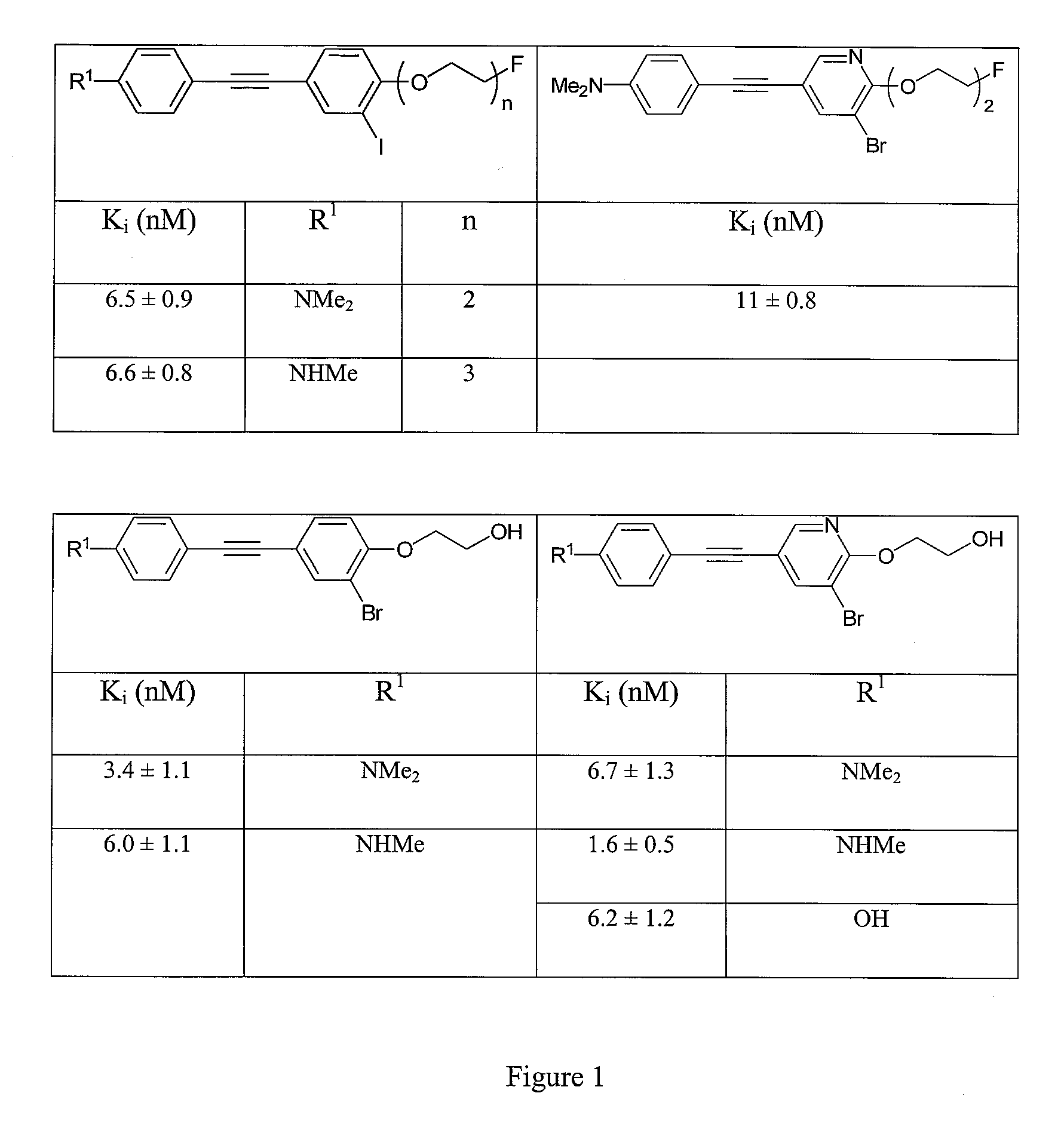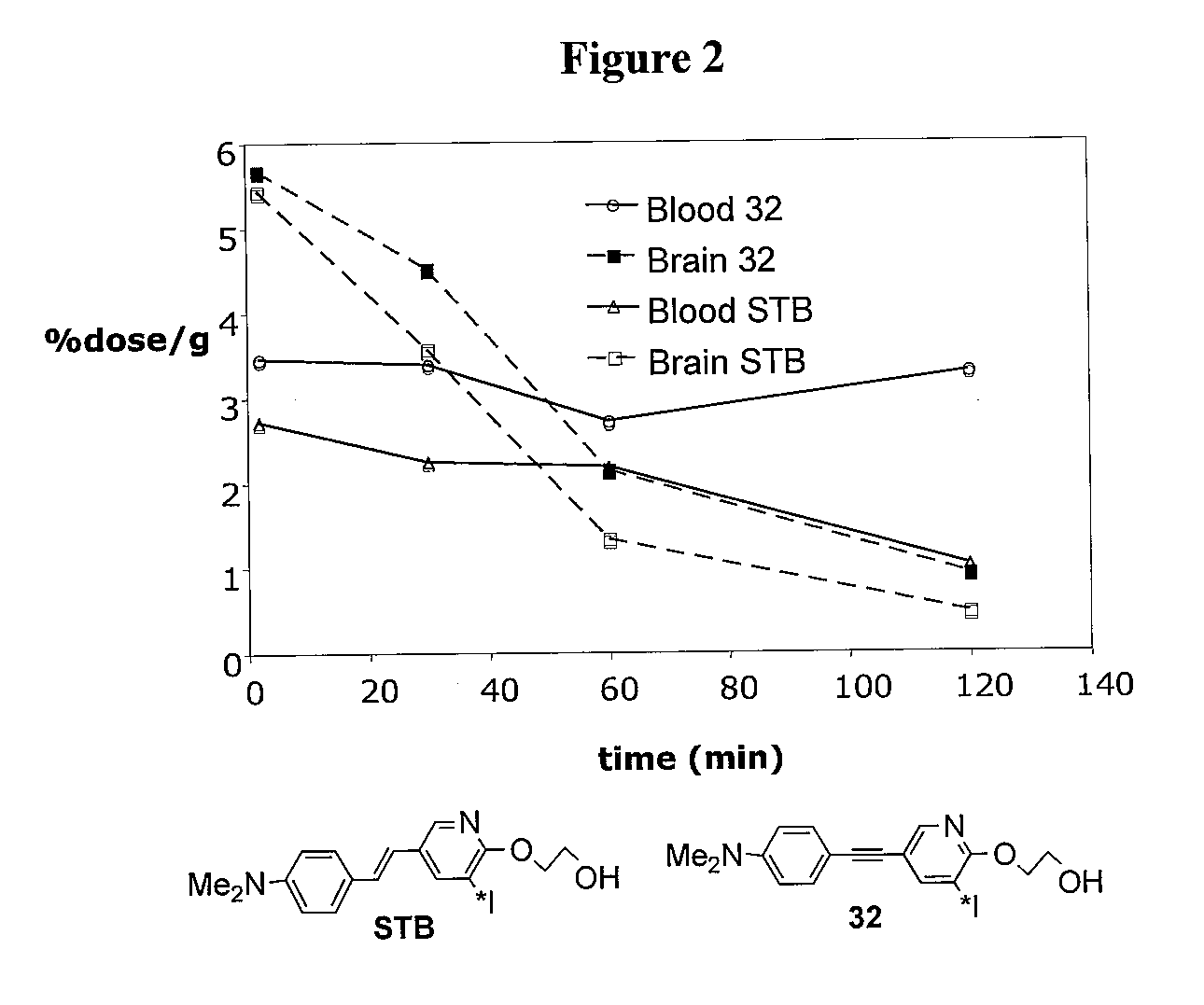Acetylene Derivatives And Their Use For Binding And Imaging Amyloid Plaques
a technology of amyloid plaques and acetylene, which is applied in the field of acetylene and bioactive compounds, can solve the problems of no definitive imaging method to diagnose ad, no information on the presence or quantity of a aggregates in the brain of any of these modalities, and significant medical problems with a high prevalence in millions of elder peopl
- Summary
- Abstract
- Description
- Claims
- Application Information
AI Technical Summary
Benefits of technology
Problems solved by technology
Method used
Image
Examples
example 1
[0225]Aβ Aggregate Binding Affinities
[0226]Alkyne derivatives which can be synthesized according to a method disclosed herein display excellent binding affinities to Aβ plaques. Examples of core structures containing iodine or bromine atom and their respective binding affinities are shown in FIG. 1. The competitive binding assay was performed using [125I]IMPY as the ligand in pooled brain tissue homogenates of confirmed AD patients. Values are the mean ±SEM of three independent experiments, each in duplicate.
example 2
[0227]A compound of the present invention is testing in an established in-vitro immunoblot assay for its ability to inhibit the formation of Aβ oligomers and fibrils. (Yang F, Lim G P, Begum A N, et al. Curcumin inhibits formation of amyloid β oligomers and fibrils, binds plaques, and reduces amyloid in-vivo. J. Biol. Chem. 280:5892-5901, 2005). Curcumin, a natural molecule serves as positive control. Acetylene compounds of this invention are able to inhibit the aggregation Aβ in a manner similar to Curcumin at concentrations of 1-100 μM.
PUM
| Property | Measurement | Unit |
|---|---|---|
| Capacitance | aaaaa | aaaaa |
| Capacitance | aaaaa | aaaaa |
| Molar density | aaaaa | aaaaa |
Abstract
Description
Claims
Application Information
 Login to View More
Login to View More - R&D
- Intellectual Property
- Life Sciences
- Materials
- Tech Scout
- Unparalleled Data Quality
- Higher Quality Content
- 60% Fewer Hallucinations
Browse by: Latest US Patents, China's latest patents, Technical Efficacy Thesaurus, Application Domain, Technology Topic, Popular Technical Reports.
© 2025 PatSnap. All rights reserved.Legal|Privacy policy|Modern Slavery Act Transparency Statement|Sitemap|About US| Contact US: help@patsnap.com



